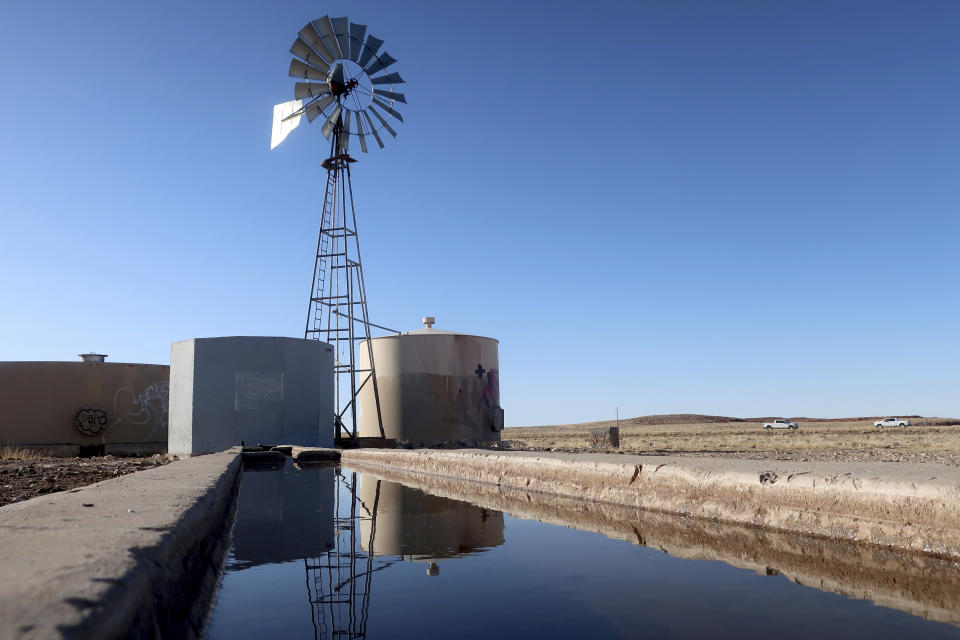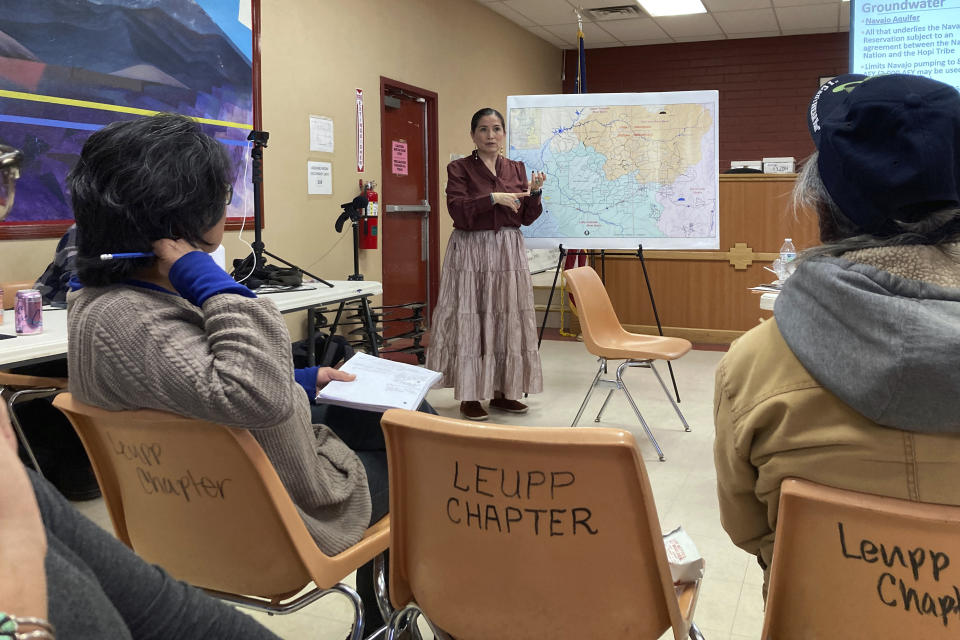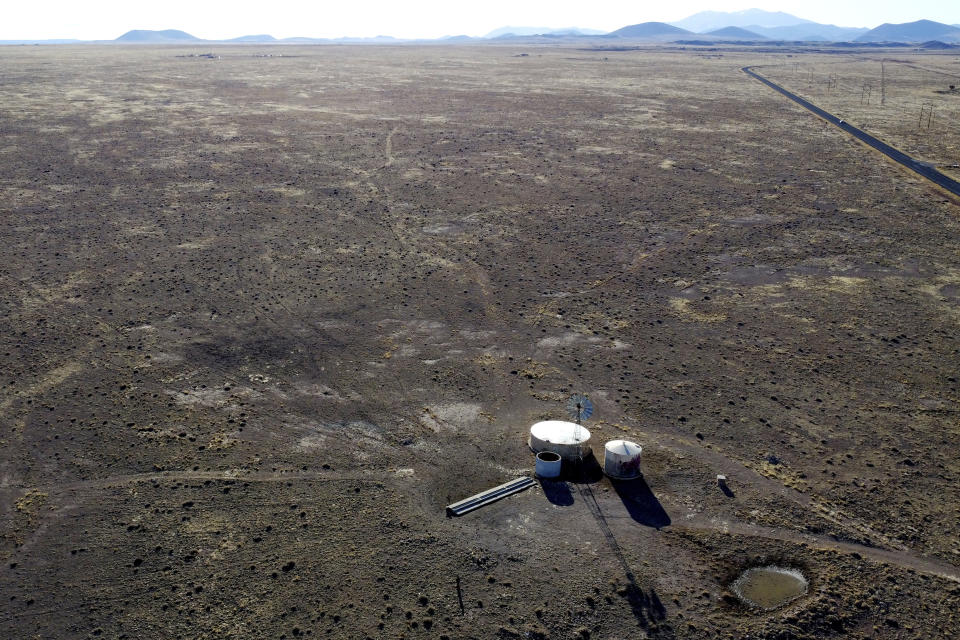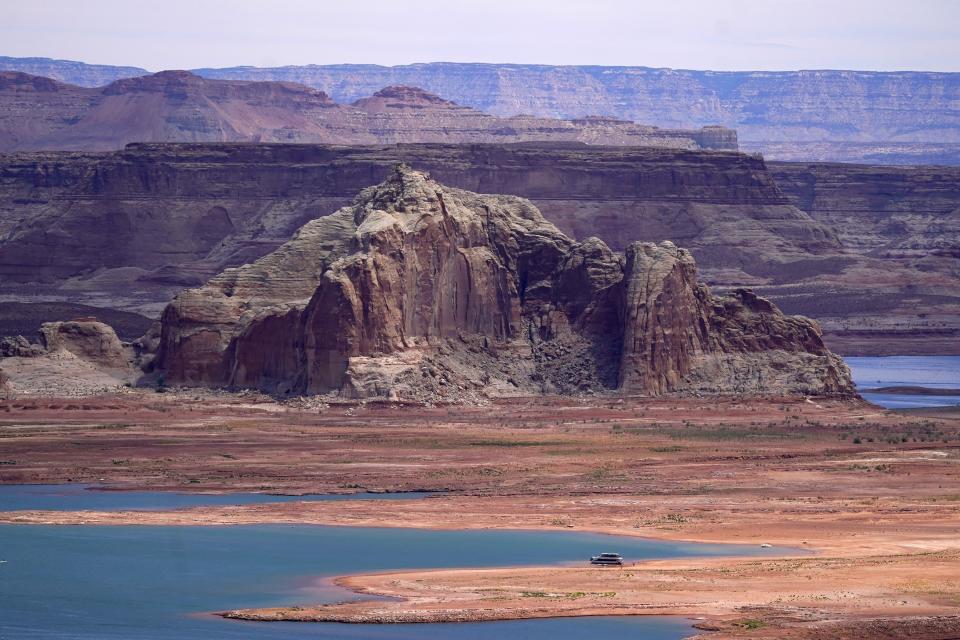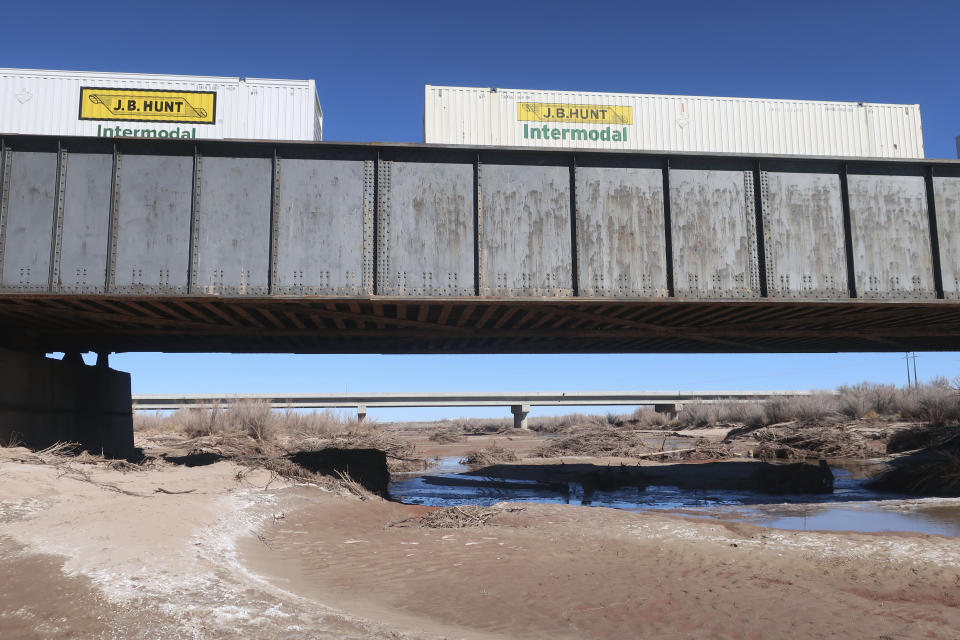Proposed settlement is first step in securing Colorado River water for 3 Native American tribes
LEUPP, Ariz. (AP) — A proposed water rights settlement for three Native American tribes that carries a price tag larger than any such agreement enacted by Congress has taken a major step forward with its introduction to the Navajo Nation Council.
The Navajo Nation has one of the largest single outstanding claims in the Colorado River basin and will vote soon on the measure in a special session. It's the first of many approvals — ending with Congress — that's needed to finalize the deal presented on Monday.
Climate change, the coronavirus pandemic and demands on the river like those that have allowed Phoenix, Las Vegas and other desert cities to thrive pushed the tribes into settlement talks. The Navajo, Hopi and San Juan Southern Paiute tribes are hoping to close the deal quickly under a Democratic administration in Arizona and with Joe Biden as president.
A landmark 1922 agreement divided the Colorado River basin water among seven Western states but left out tribes. The tribes are seeking water from a mix of sources: the Colorado River, the Little Colorado River, aquifers and washes on tribal lands in northeastern Arizona.
Nearly a third of homes in the Navajo Nation — spanning 27,000 square miles (70,000 square kilometers) of Arizona, New Mexico and Utah — don't have running water. Many homes on Hopi lands are similarly situated.
San Juan Southern Paiute will vote on the settlement within weeks, tribal President Robbin Preston Jr. said in an email. Along with guaranteed water deliveries, the tribe is asking Congress to approve a treaty it signed with the Navajo Nation in 2000 establishing an 8.4 square-mile (21.8 square-kilometer) reservation within the Navajo reservation.
“We will have economic opportunities that our tribal members have never seen before, and which will give hope and pride to our people,” Preston said.
The Hopi Tribal Council will consider the settlement during a meeting on May 20.
Without a settlement, the tribes would be at the mercy of courts. Already, the U.S. Supreme Court has ruled that the federal government is not bound by treaties with the Navajo Nation to secure water for the tribe. Navajo has the largest land base of any of the 574 federally recognized tribes and is second in population with more than 400,000 citizens.
A separate case that has played out over decades in Arizona over the Little Colorado River basin likely will result in far less water than the Navajo Nation says it needs because the tribe has to prove it has historically used the water. That’s hard to do when the tribe hasn’t had access to much of it, Navajo Attorney General Ethel Branch said.
Congress has enacted nearly three dozen tribal water rights settlements across the U.S. since 1978. Federal negotiation teams are working on another 22 settlements involving 34 tribes in nine states, the Interior Department said.
The costliest one enacted by Congress was for the Confederated Salish and Kootenai Tribes in Montana at $1.9 billion. The Navajo, Hopi and San Juan Southern Paiute tribes are seeking more than $5 billion in their settlement.
About $1.75 billion of that would fund a pipeline from Lake Powell, one of the two largest reservoirs in the Colorado River system, on the Arizona-Utah border. The settlement would require the U.S. Bureau of Reclamation to complete the project by the end of 2040.
From there, water would be delivered to dozens of tribal communities in remote areas.
“Whatever funding we walk away with is funding we don't otherwise have," Branch said. “It will be a challenge.”
The Navajo Nation has settled its claims to the Colorado River basin in New Mexico and Utah. It's separately pursuing two other much smaller settlements in New Mexico.
Arizona — situated in the Colorado River’s Lower Basin with California, Nevada and Mexico — is unique in that it also has an allocation in the Upper Basin. Under the settlement terms, Navajo and Hopi would get about 47,000 acre-feet in the Upper Basin — nearly the entire amount that was set aside for use at the Navajo Generating Station, a coal-fired power plant that shut down in late 2019. Navajo previously had agreed not to seek that water for the 50 years prior to 2019.
The proposal also includes a combined 9,500 acre-feet per year of water from the Colorado River's Lower Basin for Navajo and Hopi. Navajo additionally would have the right to draw 40,780 acre-feet from the Little Colorado River — about one-third of what's estimated to reach the reservation annually.
An acre-foot of water is roughly enough to serve two to three U.S. households annually.
Arizona, in turn, gets certainty in the amount of water available throughout the state as it's forced to cut back as the overall supply diminishes. Navajo and Hopi, like other Arizona tribes, could be part of that solution if they secure the right to lease water within the state that could be delivered through a canal system that already serves metropolitan Tucson and Phoenix.
“The leasing authority is a key component of the settlement and will allow for the tribes to get value for these water supplies as they grow into their own use and infrastructure is built over time,” Tom Buschatzke, director of the Arizona Department of Water Resources, said in an email Tuesday.
He said the settlement was significant because of the size and nature of the claims and because it’s been decades in the making.
Navajo and Hopi came close to reaching a pact to settle water rights in Arizona in 2012, but the tentative deal fell through. This time around, Navajo officials launched a public education campaign.
They held lengthy community meetings with translations in Navajo — “tó bee há haz' a” meaning “water right," for example — and described water's role in the tribe's creation story and in ceremonies. They explained complicated water law, past attempts to settle and what's at stake if the settlement fails.
In Leupp, the audience mostly asked about immediate needs: fixing the electricity on the water pump, improving roads and drilling wells.
Marlene Yazzie recalled her mother hitchhiking more than 100 miles (160 kilometers) to pressure tribal officials for electricity and water — which never came. Yazzie herself relies on water hauled to her home in nearby Birdsprings for washing, drinking and for her livestock.
“How many more years do we have to wait?" she asked.
